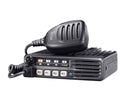
5 Common Two-Way Radio Issues and How To Handle Them
, by Joseph Gabriel, 2 min reading time

, by Joseph Gabriel, 2 min reading time

As great as technology is at making our lives easier, it’s not perfect. Eventually, you’ll run into technical issues that interfere with or obstruct its purpose. Two-way radios are no different, even as great brands like Icom mobile radios continue to improve their designs. You can solve some problems with ease once you know what to do. Here are five common two-way radio issues and how to handle them.
Perhaps the most common and frustrating issue is when your radios experience charging mishaps. Something that isn’t actually an issue, however, is when your brand-new radio battery seems like it’s taking too long to charge or doesn’t charge at all. When you first place a new battery on a charger, you’ll likely see a steady orange light. This indicates the battery is going through a process called automatic reconditioning, which preserves your battery’s lifespan by depleting the battery entirely and recharging it fully. You must wait until the battery displays a steady green light before using it for the first time.
Delays or lag is the second most common two-way radio issue, but they’re often results of user error—typically as you’re learning or getting the hang of your new radios. Most people experience lag or delay because they’re not pressing down the push-to-talk button for long enough, or they’re holding the button long after finishing their message. This can cause delay issues with the transmission or distort your message.
Transmission issues, such as cut-off messages, result from incorrectly pressing the push-to-talk button. Many people begin talking the moment they press the talk button, but they should wait a moment before speaking; otherwise, the beginning of the message may not be received.
Alternatively, you may have damaged the antennae if your radio is old. Check for bends or scuffing; you may need to replace the antenna if you notice damage.
“Dead spots” are areas that mysteriously have no signal. This could be a result of the environment—if you’re surrounded by thick concrete walls— that blocks the transmission signal. Analog radios have a much shorter range than digital, so you may be up against the end of your radio’s range.
A lot of people think two-way radio earpieces are one-size-fits-all, but this is not the case. If your earpiece falls out often, you may need to get a new one that better fits your ear. Look for earpieces with a jelly material that molds to the shape and size of your ear.